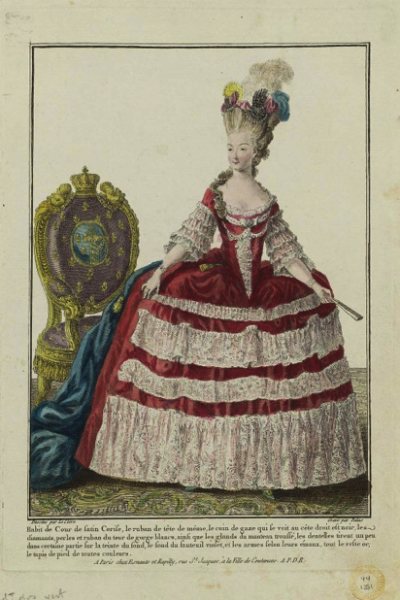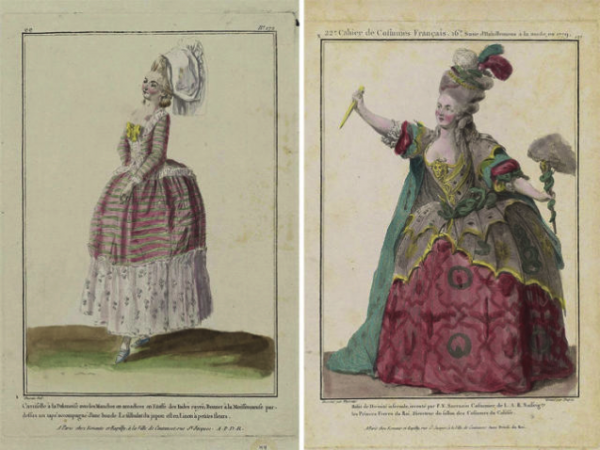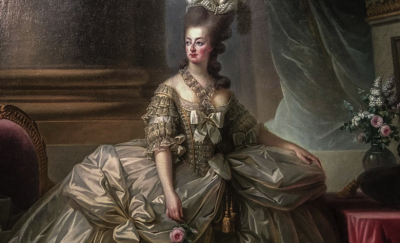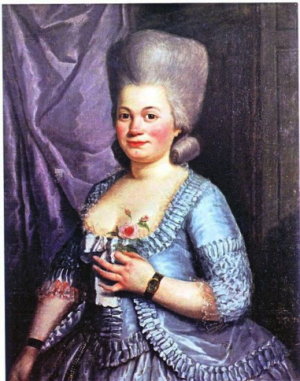The Value of Clothing and Commodity Fetishism
By Lu M. GomezdelaTorre
Clothing has the ability to act as a language. It has the powerful capability to convey a message, and express the ideas and feelings of designers and wearers. In fact, clothing can even showcase the cultural codes that represent the identity of a society. In addition, it is fascinating how an object, such as a garment, can have a history behind its production, and also the power to acquire a wearers’ emotional memory over time. However, clothes could easily become objects of fetishism when consumers use them to gain power and social mobility.
In his essay “Marx’s Coat,” Peter Stallybrass argues that objects, such as clothes, and the act of consumption were fetishized with the development of capitalism in the 19th century. As Stallybrass explains, this idea of fetishism in relation of objects and consumption was proposed by the German philosopher and economist Karl Marx. According to Stallybrass, Karl Marx talks about the issue that emerges when the labour and the labour conditions of a commodity are forgotten, and how only the value of a commodity seems to exist within itself. He calls this “commodity fetishism.” For Marx the word fetishism is used to describe how modern society “worships” or expresses a type of irrational devotion to objects, which, at the same time, erases the value of human labor, the history, memory, and love behind the production of objects that are worn by people (Stallybrass 186-187). For instance, when a garment, such as the Marx’s coat, is pawned, it is stripped of its memory and sentimental value and becomes a commodity that can be traded in exchange of power and social status (Styallybrass 195). Therefore, clothes exist as objects of economic value that are separated from the social relationships between the people who participated in their production. In respect to this, I think that consumption without consciousness becomes part of the phenomenon of commodity fetishism. This is because if a consumer carefully chooses a product based on what it is made of, and how it was made of, that person is able to understand the labour process and mechanisms behind the production of this particular object. In this case, the consumer is able to understand a product beyond the idea of trading value. This connection is important, if not fundamental, to establish a close link between production and consumption and to break free from the vicious cycle of work, consume, and repeat. It also allows consumers to value the interpersonal relationships of the humans that are behind the creation and production of a product or garment.
There are countless examples of commodity fetishism in the history of fashion and how garments were traded for social mobility and power. We can find some of them, even long before Marx was born. For instance, we can talk about the case of the grand habit, designed by Louis XIV, which was the most formal dress in all European courts during 17th century. This gown was a mandatory requirement for all female courtiers at the French court who sought to gain the king’s favor. During that time, women were willing to pay lots of money to buy this style of gowns that used more than 20 yards of fabric for their elaborated production. I tried to find information on the production of grand habits during the baroque period, and very little information came up on the search engine results. It seems as though the stories behind the textile workers, designers, seamstresses, and all the artists involved in the production of garments had little or no value once gowns were taken to the market to become a commodity. Thus, they were easily forgotten by society. In addition, we could also talk about the close relationship between Marie Antoinette and couturier Rose Bertin, who created the queen’s outfits. Bertin’s ostentatious and expensive gowns were fetishized by the French aristocracy as they represented a way to obtain and display power, wealth, and social status. However, enemies and friends of the French court criticized Rose Bertin’s friendship with Marie Antoinette, focusing more on the Bertin’s high prices and the queen’s frivolous lifestyle than on the designer’s herself, her labour, the construction and originality of her designs, and impact on the future of Parisian haute couture.
We can also find more contemporary examples of commodity fetishism. For instance, we have the case of Victoria’s Secret, which is a popular brand that specializes in selling clothing and underwear. Thorough their aggressive advertisement campaigns, especially during the first decade of the 21st century, Victoria’s Secret promoted a new ideal type of oversexualized feminine body and image. In their ads and fashion shows, it was very usual to see slim models living a luxurious life style while wearing the brand’s lingerie and swimwear. Moreover, women were subtly induced to purchase products that promised to make their lives better. As a result, the value of the Victoria’s Secret garments was displaced from the labour time that went into creating them and became fetishized by consumers. In addition, a report published by Bloomberg in 2011 makes us think about the human stories behind the production of Victoria’s Secret garments. The Bloomberg report documents the life of a 13-year-old-girl, who was abused while working on a cotton field in Burkina Faso. It was reported that Victoria’s Secret thorough its parent company Limited Brands purchased the cotton picked by this and other female workers at Burkina Faso to produce their clothing line. Indeed, in these cases, one cannot help but to wonder how many consumers take some time to value the human stories and labour involved in the production of the garments they purchase?
In conclusion, there are many examples of the use of clothing as a trading commodity in the history of humanity and fashion. However, with the emergence of fast fashion and mass production, customers are more than ever encouraged by marketing strategies to buy more frequently. The constant innovation of products in the market motivates customers to buy more often by making recent styles old or outed. In addition, people need to purchase more often in order to continually satisfy their desire to display their social and economic status. Thus, by doing so, a disassociation between consumers and all the workers involved in production occurs, delineating the case of commodity fetishism.
Works Cited Bennahum, Judith. The Lure of Perfection: Fashion and Ballet, 1780-1830. Routledge; October 18, 2004.
Stallybrass, Peter. “Marx’s Coat.” Spyer 183–207





No comments:
Post a Comment